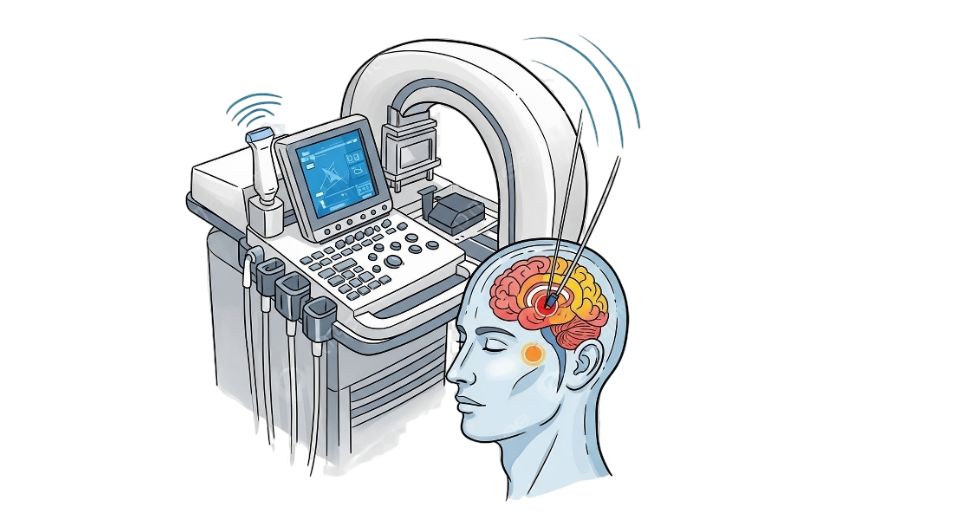
Jul 15, 2025

Presented by the most recent report published by Metastat Insight, the Global Focused Ultrasound System for Neurosurgery Market is increasingly being analyzed with an intensity of scrutiny that only intensifies its own importance in neurological medicine. The data in the report synthesizes a sophisticated awareness of how this category is informed by innovation, real-world application, and the actual clinical needs of the medical specialists addressing complicated brain disease. Over the past decade, neurosurgery has seen an evolution of operational philosophy, with precision, minimal invasiveness, and outcome-driven techniques revolutionizing traditional practices. At the center of all this is focused ultrasound, a technique that has evolved from academic interest to a potential clinical approach. This market's evolution is not a manifestation of fadism, but an intentional reflection of changing treatment paradigms.
Neurosurgeons from all over the world are looking for devices that have minimal collateral effect but provide precise, targeted effects. Focused ultrasound responds to this need by providing a procedure that uses sound waves to affect deep brain structures without the need for an incision in many instances. Its repercussions extend far beyond hypothetical medicine, now affecting everyday surgical planning in specialty centers. Most importantly, its incorporation is not simply a matter of substituting current instrumentation, but of redefining the overall treatment pathway frequently making once-inoperable cases more viable. The story of expansion in the Global Focused Ultrasound System for Neurosurgery Market is one of multidimensional interaction among clinical need, infrastructure preparedness, and regulatory factors. Certain organizations are advancing quickly toward the adoption of these systems, driven by internal research capabilities as well as by external partnerships.
At the same time, the existence of institutional reluctance in other areas typically has to do with cost, as well as the manpower involved in re-training operating room personnel for newer procedures. Overcoming these barriers, there is an undeniable pick-up in uptake between centers that are committed to neurologically directed innovations. Perhaps one of the more fascinating elements of this field is the ongoing feedback loop between practice and study. Targeted ultrasound, previously reserved for investigational purposes, is increasingly being used in therapeutic environments with increasing confidence. Such confidence is not based entirely on trial results but on real patient outcomes that confirm the worth of the method.
In numerous senses, the confidence built from these initial uses paved the way for wider institutional acceptance. Hospitals and research institutions today view these systems no longer as experimental, but as essential additions to their neurosurgical resources. Additional layers of complexity to the market are the engagement of multidisciplinary teams. Neurosurgeons, radiologists, physicists, and biomedical engineers all play a role in the deployment and calibration of focused ultrasound technologies. Each has a distinct point of view, expanding the system's relevance and use. It is this collaborative environment that permits improvements to targeting mechanisms, control protocols, and safety margins.
Through greater synergy within these areas, the systems themselves become more responsive to the subtle demands of brain-specific treatment models. Investment in the industry also tells a story of long-term dedication rather than fleeting enthusiasm. Institutions that have incorporated focused ultrasound systems within their departments of neurosurgery are likely to continue to invest in related infrastructure. These include high-end imaging suites, software for patient-specific modeling, and training programs specific to the particular protocols being used. This commitment goes well beyond hardware, however, recognizing the necessity of long-term clinical trials that track outcomes and refine future applications of the technology. Such changes suggest a market that is expanding by building up from the inside out, rather than merely superficial growth.
Another dimension to keep in mind is geographical implementation distribution. The Global Focused Ultrasound System for Neurosurgery Market is characterized by marked regional variations, which vary according to healthcare policy, investment, and educational initiative. Some countries follow a quicker path as a result of early collaborations between industry and teaching hospitals, while others have more protracted timelines in light of logistical as well as regulatory hurdles. But the underpinning change in attitude from novelty to necessity is happening beyond national borders, if unevenly.
Technological sophistication continues unabated, although the systems now in use have accumulated years of iterative development. Manufacturers are continually discussing with clinical practitioners how usability is enhanced, target fidelity improved, and system reliability optimized. As these advances mount, the bar for successful integration into clinical processes is reduced. Hospitals no longer consider such systems isolated pieces of equipment but as part of an extended therapeutic strategy. One highly interesting trend is the expanding patient population that is availing this technology. As much as early applications tended to concentrate on severe or refractory cases, the indication is broadening to cover patients with otherwise managed conditions via more invasive procedures. Such a changing definition of who is eligible as a patient says a lot about how safe and effective the system is perceived to be. It, in turn, affects procurement, long-term planning at the strategic level, and even neurosurgical education curriculum design.
The analysis provided by Metastat Insight on the Global Focused Ultrasound System for Neurosurgery Market captures these dynamics not as discrete events but as components of a larger structural transformation in neurological treatment. It doesn't just chart market trends it provides an image of the highly interdependent processes that enable innovation to germinate in clinical settings. As focused ultrasound becomes increasingly integrated into neurosurgical practices, it is no longer as much of a specialty device and more of a strategic necessity, marking a lasting shift in the treatment of brain disorders across the globe.
Drop us an email at:
Call us on:
+1 214 613 5758
+91 73850 57479